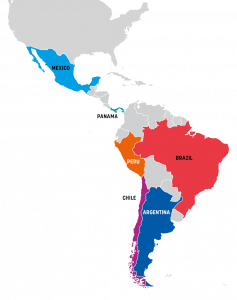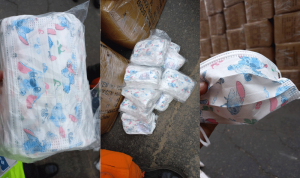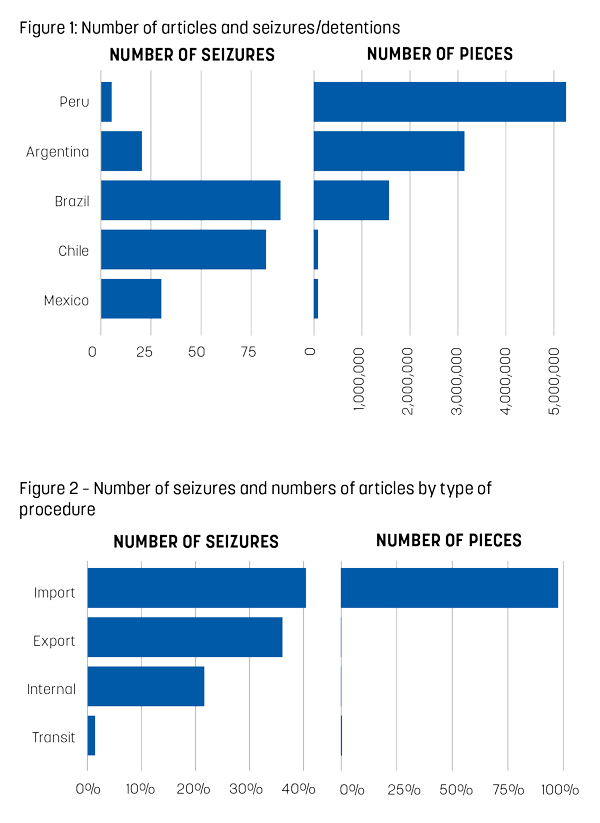Operation SEASCAPE 2: results and review
14 June 2023
 An operation dubbed Seascape 2 to combat counterfeiting and piracy, made possible by funding from Japan Customs, was organized by the WCO Secretariat in June 2022. It involved six Customs administrations from the Americas: Argentina, Brazil, Chile, Mexico, Panama and Peru.
An operation dubbed Seascape 2 to combat counterfeiting and piracy, made possible by funding from Japan Customs, was organized by the WCO Secretariat in June 2022. It involved six Customs administrations from the Americas: Argentina, Brazil, Chile, Mexico, Panama and Peru.
As is the case for all WCO enforcement operations, there were several objectives. Among them, in particular, were those of enabling administrations to share tactical information, identify new fraud techniques and strengthen practical cooperation at national level with the other enforcement agencies and rights holders.
Five of the six participating Customs administrations declared cases of seizure/detention. In total, 118 cases, logged in 226 seizure reports, were reported, amounting to a total of more than 10.13 million articles. It is worth noting that one case can generate several reports. For example, where there are several different kinds of goods, there will be a separate seizure for each type of product. For the sake of comparison, during the first SEASCAPE operation in 2016, 4,569,935 articles were seized/detained, i.e. half the current figure, even though there were more participating countries (10 rather than six).
Articles suspected of infringing intellectual property rights were split among 16 categories. Of the total number of articles, 52% fell into a category called “other”, which mainly includes face masks, hand tools and ball bearings. The other categories of articles with the highest volumes are mobile phones (17%), tobacco (12%), and games and toys (12%). The 10 brands most frequently involved are Disney, Adidas, Lego, Kingston, Apple, SKF, Toyota, Marvel, Pokémon and Nike.
Preparatory workshop
Before the operation got under way, a preparatory workshop took place from 1 to 3 June 2022 with around 30 experts from the various countries, who reviewed risk assessment techniques and the methods for distinguishing between genuine and fake goods. The National Contact Points attending the workshop were then asked to pass on the information gathered and the documentation provided to the frontline officers.
One day was set aside for representatives of the rights holders to present the main characteristics of the products of their brands, including packaging and the production and distribution chain. Eighteen of them were present: Colgate-Palmolive, Juul, Procter & Gamble, PMI, Diageo, Puma, Bayer, Servier, MF brands, Moderna, Merck, JTI Nike, Chanel, Tommy Hilfiger, Syngenta, Richemont and HP.

Operational phase
From 5 to 30 June 2022, the participating Customs were asked to declare IPR-related seizures/detentions via the WCO’s secure communication tool CENcomm. Information continued to be gathered on the cases reported until the end of September. The information had to be as precise as possible. For instance, the following were to be reported:
- the precise quantities of goods seized for each brand;
- the type of intellectual property right infringed in terms of Community or national legislation (trademark, copyright, patent, etc.);
- the targeting criteria used and the sources of information (information passed on by the rights holders, seizure/detention report from another country);
- the routes taken (origin, place of dispatch, transhipment, transit, final destination, etc.);
- the concealment methods;
- photos of the packages and products intercepted;
- information on any arrests or prosecutions brought.
All means of transport were to be targeted (by land, sea and air), with particular focus on Customs controlled areas at the major points of entry, such as:
- ports, airports and dry ports;
- Customs warehouses and other licensed premises;
- free zones;
- mail and express parcel services.

Results
Peru Customs found 50% of the articles (i.e. 5.2 million articles) in five seizures carried out at a seaport. Argentina and Brazil also seized large quantities (3.1 million and 1.5 million articles respectively). In terms of numbers of seizures, Brazil and Chile reported 75% of the total.
While 40% of the seizures were made at import, accounting for 98% of the articles discovered, the number of seizures was also relatively high at export (36%) and on the internal market (22%) for products already placed in free circulation.

Some products, for example ball bearings and hair straighteners, did not comply with current quality and safety standards, and their use could have posed a threat to users. It is also interesting that the source country of 99% of the articles in the tobacco category was Paraguay, with the destination being Brazil.
Review and recommendations
Most of the administrations that took part in the operation have an appropriate IPR legal framework. The WCO Secretariat experts observed a strong desire to ensure that it was respected, but they also noted a lack of resources allocated to the reporting of data on seizures/detentions, in particular as regards the outcome of investigations. Raising the public’s awareness of IPR, so that people understand the advantages of intellectual property and the respect with which it should be treated, is another area of work to which Customs should contribute.
The experts also hope that the six administrations will continue to play an active role in the IPR CENcomm Group, which is open at all times and not only when high-profile operations are in progress. For this purpose, they should designate a contact point to report on IPR-related infringements and non-compliance with health and safety standards. The contact point should also, on a daily basis, keep an eye on information obtained in the Group and send the information on to his or her administration’s risk management unit. Field officers should also have access in order to be able to consult the information reported within the Group, including intelligence provided by rights holders in the “Rights Holders’ Corner”. It should be borne in mind that any accredited officer can gain access to CENcomm via the mobile app.
The WCO Secretariat is well aware of the substantial volume of work involved in entering data in CENcomm and in the Customs Enforcement Network (CEN). However, it has pointed out to its Members how useful these data are to improve targeting and reminded them of the commitments they entered into in this field when they adopted the “WCO Charter of Data Quantity and Quality Enhancement in the CEN” in June 2021.
More information
iprteam@wccomd.org

